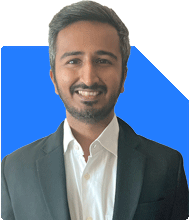55-Year-Old Investing 53K Monthly: Can I Achieve a 2 Crore Corpus by 60?
Ramalingam Kalirajan |9854 Answers |Ask -Follow
Mutual Funds, Financial Planning Expert - Answered on Sep 17, 2024
He has an MBA in finance from the University of Madras and is a certified financial planner.
He is the director and chief financial planner at Holistic Investment, a Chennai-based firm that offers financial planning and wealth management advice.... more

Hi Dev Ashish, I amn 55 years old and doing SIP of about 53K Monthly since 2018 in below MF schemes. Aditya Birla sun life flexi cap, axis flexi cap, camera rob small cap, axix mid cap, HDFC mid cap, icici pru opportunity,Nippon India large cap, kotak emerging, icici prud equity and debt, icici prud flexi cap respectively. And till date invested about 30 L and current portfolio is about 49 L. Would like to have corpse about 2 corore at age 60.( 5 years left) Can you advise, the invested funds are good to achieve? Thanks kam
Achieving Rs. 2 crore in five years is an ambitious target, but with your disciplined approach, it’s certainly within the realm of possibility. Let’s take a detailed look at your current investments, their performance, and the necessary steps to help you achieve your financial goal of Rs. 2 crore.
Diversification in Your Portfolio
You have wisely spread your investments across different types of mutual funds, such as:
Flexi-cap funds
Large-cap funds
Mid-cap funds
Small-cap funds
Hybrid (equity and debt) funds
Diversification is one of the key principles of successful investing. By investing across these different categories, you’re minimizing the overall risk while potentially maximizing returns. Each fund category comes with its own risk-reward profile:
Flexi-cap funds: These funds have the flexibility to invest across market capitalizations. This allows the fund manager to switch between large-cap, mid-cap, and small-cap stocks based on market opportunities. This flexibility can provide a balanced risk-return profile.
Large-cap funds: These funds invest in well-established, financially sound companies. Large-cap companies tend to be more stable and offer relatively lower risk compared to mid-cap or small-cap stocks. These funds are ideal for those nearing retirement due to their stability.
Mid-cap and small-cap funds: While these funds have higher growth potential, they also carry higher risks. They tend to be more volatile and are generally suited for long-term investors who can withstand market fluctuations. As you near retirement, it’s essential to reduce exposure to these riskier funds to avoid potential losses.
Hybrid (equity and debt) funds: These funds offer a mix of equity and debt investments, providing a balanced risk-return profile. They are less volatile than pure equity funds and are suitable for investors looking for a stable and predictable return over time.
Your choice of hybrid funds also adds stability to your portfolio, which is crucial as you approach retirement. However, given the short time horizon (five years), rebalancing your portfolio might help improve the likelihood of reaching your goal.
Is Your Current Strategy Enough?
Let’s now address the big question: Can you reach Rs. 2 crore in five years with your current investments? Based on your current portfolio of Rs. 49 lakh and a monthly SIP of Rs. 53,000, you would need an annualized growth rate of around 26-28% to meet your Rs. 2 crore goal.
While this growth rate is not impossible, it is quite aggressive, especially considering the potential market volatility over the next five years. Achieving such high returns consistently can be challenging. Stock markets, while rewarding in the long term, can be unpredictable in the short term.
To help you achieve your financial goal of Rs. 2 crore, let’s explore some strategies that could enhance your portfolio’s growth while managing risk effectively.
Steps to Achieve Rs. 2 Crore in 5 Years
Increase SIP Contributions
While your current SIP of Rs. 53,000 per month is substantial, increasing your monthly contribution could significantly enhance the growth of your portfolio. Consider increasing your SIP by Rs. 20,000 to Rs. 30,000 per month. An additional Rs. 30,000 in SIPs could bring in approximately Rs. 18 lakh over five years, excluding the potential returns.
Increasing your contribution is one of the most effective ways to bridge the gap between your current portfolio and your Rs. 2 crore goal. This will also reduce the reliance on high market returns to achieve your target.
Rebalance Your Portfolio
As you are approaching retirement, it’s important to reassess your asset allocation. You’ve done a great job of diversifying across multiple fund categories, but you should now consider rebalancing your portfolio to reduce exposure to riskier funds like small-cap and mid-cap funds.
Reduce exposure to small-cap and mid-cap funds: These funds tend to be volatile, and while they offer higher growth potential, they also come with higher risk. Since you’re just five years away from retirement, it would be prudent to lower your exposure to these funds and shift more towards large-cap and hybrid funds.
Increase allocation to large-cap and hybrid funds: Large-cap funds provide more stability and consistent returns, which are crucial as you approach retirement. Hybrid funds offer a mix of equity and debt, providing a safer and more predictable return. By increasing your allocation to these funds, you reduce the overall risk while still maintaining growth potential.
Actively managed funds: Your current portfolio includes several flexi-cap and mid-cap funds. Actively managed funds can be beneficial for investors with a shorter time horizon. Fund managers have the flexibility to adjust the portfolio based on market conditions. This is especially important in the next five years when you need to minimize losses and capture opportunities. It’s better to avoid index funds, which are passive and may not adapt well to market fluctuations.
Consider Increasing Debt Exposure
Debt instruments provide safety and steady returns, which can be valuable in your pre-retirement years. You’ve already included hybrid funds, which have a debt component, but increasing your exposure to debt through pure debt funds or balanced advantage funds can add further stability to your portfolio.
Investing in debt funds provides a cushion against market volatility and ensures that a portion of your portfolio remains unaffected by stock market movements. Since your time horizon is short, balancing the risk-return equation with more debt exposure will be beneficial.
Avoid Excessive Exposure to Volatile Assets
While you may be tempted to continue investing in high-growth potential funds like small-cap and mid-cap, it’s important to note that these funds can be extremely volatile in the short term. As you approach retirement, it’s critical to protect your capital. A sudden market downturn can significantly impact your portfolio and derail your plans for retirement.
By reducing exposure to small-cap and mid-cap funds, you’re ensuring that a portion of your portfolio is insulated from extreme market fluctuations. This is especially important in the final years leading up to retirement, where preserving capital becomes as important as growing it.
Review Fund Performance Regularly
While you’ve diversified your portfolio across multiple categories, it’s essential to monitor the performance of each fund regularly. Not all funds perform consistently, and underperforming funds can drag down your portfolio’s overall returns.
Evaluate the performance: Compare each fund’s performance against its benchmark and category peers. If a fund consistently underperforms over a significant period, consider switching to a better-performing option.
Stay updated: Mutual fund performance can change over time due to various factors such as changes in fund management, market conditions, and the economic environment. Regular reviews will help ensure that your investments are aligned with your financial goals.
Focus on Long-Term Consistent Performers
When selecting funds or rebalancing your portfolio, it’s crucial to focus on funds that have a proven track record of delivering consistent returns over the long term. Funds that have weathered market volatility and provided steady growth are likely to continue performing well.
By investing in consistent performers, you reduce the risk of market shocks and increase your chances of achieving your Rs. 2 crore target.
Increase Exposure to Safer Assets as You Near Retirement
As you approach retirement, it’s advisable to shift a portion of your portfolio towards safer, less volatile investments. This could include large-cap funds, debt funds, and hybrid funds with a focus on preserving capital. The aim is to ensure that your portfolio remains protected from sudden market downturns, especially as you near your retirement date.
By gradually increasing your allocation to safer assets, you’ll reduce risk while still allowing your portfolio to grow steadily.
Additional Financial Planning Considerations
Beyond adjusting your investment strategy, here are other financial planning aspects to consider:
Emergency Fund: Ensure that you have a sufficient emergency fund in place. This should cover at least 6-12 months of your monthly expenses. An emergency fund acts as a safety net, ensuring that you won’t have to dip into your investments in case of unexpected expenses.
Health and Life Insurance: While you already have health and term insurance, ensure that the coverage is adequate to cover any potential medical expenses in retirement. Health care costs tend to rise in later years, and having comprehensive insurance coverage can protect your retirement savings.
Estate Planning: Ensure that your estate planning is in place, especially if you have dependents. This includes drafting a will and nominating beneficiaries for your investments and insurance policies. Estate planning ensures that your wealth is passed on smoothly to your family in case of any unforeseen circumstances.
Finally
Achieving Rs. 2 crore in the next five years is possible with disciplined investing and prudent adjustments to your strategy. Increasing your SIP contributions, rebalancing your portfolio, and focusing on long-term consistent performers will help boost your portfolio’s growth while managing risk effectively.
Additionally, safeguarding your financial well-being through insurance, tax planning, and estate planning is crucial as you approach retirement.
By taking these steps, you can ensure that you are well-prepared for a comfortable and secure retirement.
Best regards,
K. Ramalingam, MBA, CFP
Chief Financial Planner
www.holisticinvestment.in
Best Regards,
K. Ramalingam, MBA, CFP,
Chief Financial Planner,
www.holisticinvestment.in
You may like to see similar questions and answers below
Vivek Lala | Answer |Ask -Follow
Tax, MF Expert - Answered on Jul 03, 2023
Ramalingam Kalirajan |9854 Answers |Ask -Follow
Mutual Funds, Financial Planning Expert - Answered on May 25, 2024
Ramalingam Kalirajan |9854 Answers |Ask -Follow
Mutual Funds, Financial Planning Expert - Answered on Sep 11, 2024
Ramalingam Kalirajan |9854 Answers |Ask -Follow
Mutual Funds, Financial Planning Expert - Answered on Nov 18, 2024
Patrick Dsouza |1336 Answers |Ask -Follow
CAT, XAT, CMAT, CET Expert - Answered on Jul 27, 2025
Patrick Dsouza |1336 Answers |Ask -Follow
CAT, XAT, CMAT, CET Expert - Answered on Jul 27, 2025
Nayagam P P |9494 Answers |Ask -Follow
Career Counsellor - Answered on Jul 27, 2025
Nayagam P P |9494 Answers |Ask -Follow
Career Counsellor - Answered on Jul 27, 2025
Nayagam P P |9494 Answers |Ask -Follow
Career Counsellor - Answered on Jul 27, 2025
Nayagam P P |9494 Answers |Ask -Follow
Career Counsellor - Answered on Jul 27, 2025
Nayagam P P |9494 Answers |Ask -Follow
Career Counsellor - Answered on Jul 27, 2025
Nayagam P P |9494 Answers |Ask -Follow
Career Counsellor - Answered on Jul 27, 2025
Nayagam P P |9494 Answers |Ask -Follow
Career Counsellor - Answered on Jul 27, 2025
Mohit Arora |71 Answers |Ask -Follow
Dating Coach - Answered on Jul 27, 2025




















